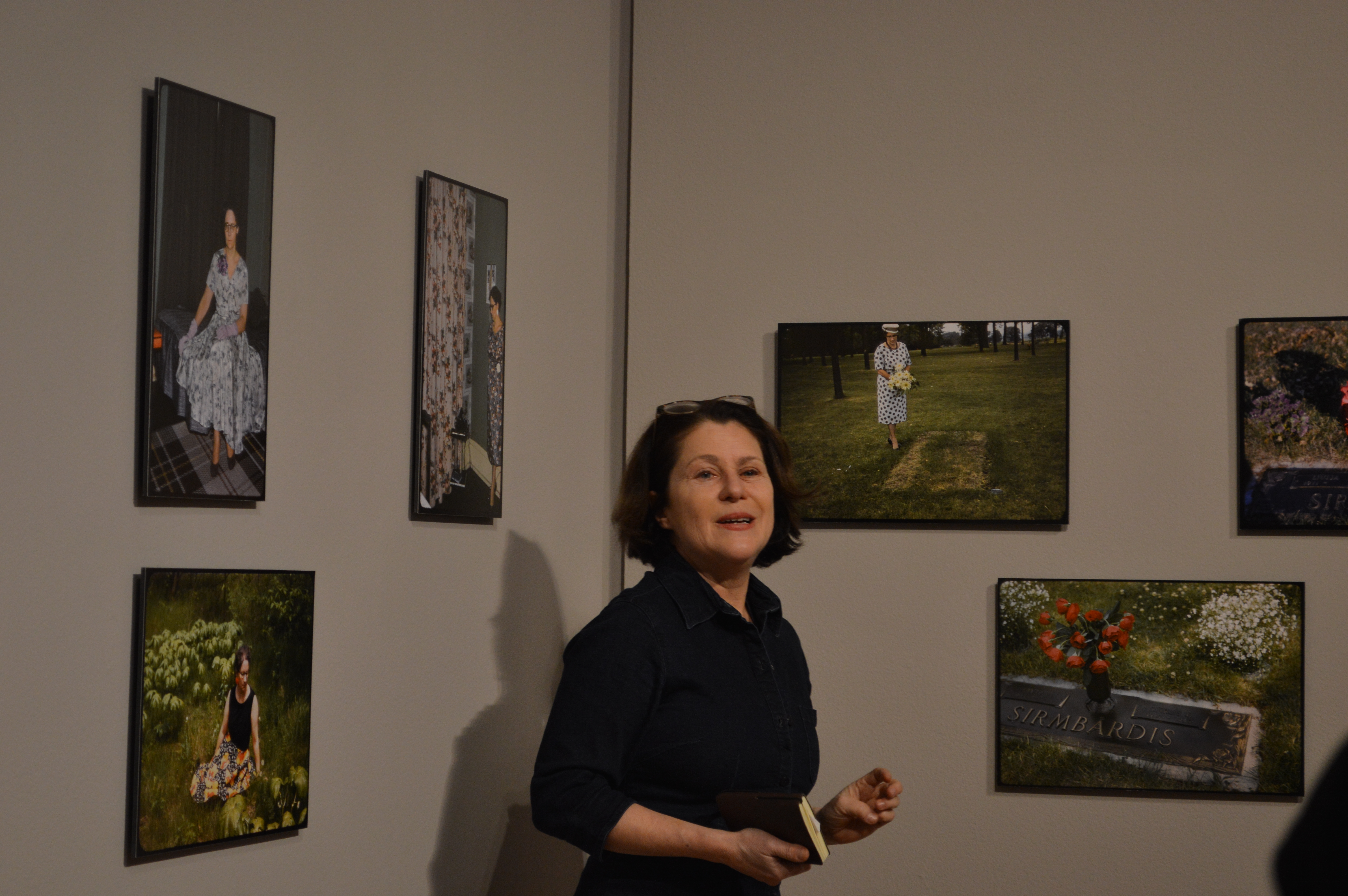Brehmer gives a talk about found photography.
Photo by Natalie Cash
This past Wednesday evening, April 6, the Wriston Art Center hosted another one of its Spring Exhibition Gallery talks presented by arts writer and director of the Portrait Society Gallery Debra Brehmer. Hosted in Leech Gallery, a small group of Lawrence University faculty and students gathered to view and discuss Brehmer’s recent exhibition, Certificates of Presence: The Photography of Livija Patikne. An hour of thoughtful conversation prompted questions about the identity and significance of artists and their art as Brehmer introduced the many quirky photographs from Livija’s private slide collection.
Livija’s collection of almost 300 photographs fell into the hands of Brehmer after friend and Milwaukee photographer Jim Brozek was given the box of photographs by an apartment caretaker who had cleaned out Livija’s apartment when she passed away. Not much was known about the Latvian-born woman except that she and her husband fled Latvia and Germany to come live in Milwaukee until her death in 2001. After Livija’s death, Brehmer stated, people began to discover more information about her and her photographs. The various still-lifes depict Livija’s eccentrically-posed floral arrangements, portraits of herself in her apartment and unconventional photographs of her late husband’s gravesite. Similar to how Brozek kept the slides for almost 15 years, Brehmer felt unsure whether she should keep the collection or not. However, some individual pictures spoke to her in a way that also represented a part of Livija’s personal identity, so Brehmer shared her reactions to the strange yet compelling art.
One of the main questions that Brehmer asked the small audience was whether or not gathering the photographs was worth the time and commitment to put the exhibition together. She then described how significant it was for her when Livija’s niece and nephew showed up to see their late aunt’s photographs at the first gallery showing. Unbeknownst to Brehmer and Brozek, Livija had relatives in the area who had mostly kept to themselves for the last couple of years. In the surprising but interesting discovery of the niece and nephew, some pieces of Livija’s solitary and private life were put into place.
Livija took the collection of pictures over a course of three years in the 1960s. Though seemingly arbitrary, Livija’s photographs pose as almost a sneak-peek into the woman’s past and tell a story of her identity as an artist and woman photographer. The flowers in her photographs are carefully arranged, and the background and settings of the pictures repeat in some of the other works, even some with Livija as the main subject. The photographs also represent the loss of Livija’s past life in Latvia. As for the self portraits, the audience sees how she intentionally placed flowers in the photograph to contrast with the floral wallpaper background and her homemade patterned dresses. Brehmer said that it was unusual for a woman in the 1950s and ‘60s to be so self-assured and sophisticated. Perhaps Livija appreciated her role as a homemaker and used photography to enhance her self-definition. Brehmer stated that the slides could have acted as a mirror for Livija and reflected how she saw and identified herself.
Most times, these kind of photographs would be thrown away, Brehmer explained, implying that unusual photographs like Livija’s would not normally be presented in an art gallery. However, there are many different ways of looking at Livija’s artwork and many different ways of determining how artists see themselves and how audiences see significance in the artists’ work. The hour of discussion surrounding Livija’s peculiar collection proved that people and artists alike can gain an appreciation for even the smallest, most intimate moments of everyday life.

